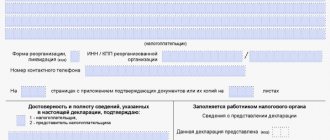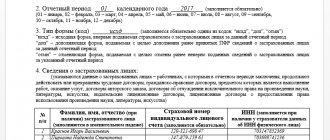To calculate advance payments and simplified tax system, you can use a free online calculator directly on this website.
The simplified tax system, or simplified system, as it is also called, is one of the most popular tax regimes among individual entrepreneurs. Its popularity lies in the simple procedure for calculating tax, minimum reporting and the possibility of application to most types of activities.
To calculate payments under the simplified tax system, you do not need to look for information on additional coefficients or the amount of potential income, as individual entrepreneurs do on the special tax system. In addition, you do not need to submit reports to the Federal Tax Service every month or quarter. Let’s add to this the rather high limits on income and number of employees (they were raised in 2021) and we’ll get the answer why simplified taxation has been so popular among entrepreneurs lately.
Free tax consultation
In this article you will learn what specific taxes and mandatory payments an individual entrepreneur pays under the simplified tax system in 2021 without employees.
Advance payments
The simplified version presupposes one rule: during the year, an entrepreneur or organization must make a kind of “prepayment of tax” - advance payments once a quarter. This is done before the 25th of the month following the reporting period. The dates for 2021 and 2021 are as follows:
| Reporting period | 2020 | 2021 |
| 1st quarter | April 27 | 26 April |
| half year | July 27 | 26 July |
| 9 months | October 26 | the 25th of October |
Then, at the end of the year, the remaining tax is calculated and paid. It is paid no later than the deadline established for filing a simplified tax return. In 2021 and 2021, the deadlines are as follows: The shift in dates is due to the fact that the deadline for submission falls on a weekend. In this case, you can pay the tax on the next business day.
| Reporting period | 2020 | 2021 |
| For individual entrepreneurs | April 30 | April 30 |
| For LLC | March 31 | March 31 |
Sanctions for non-payment of advances and taxes
If a business ignores the quarterly “prepayment of tax” and pays the full amount at the end of the calendar year, it will be subject to penalties under the tax code. In the absence of advance payments, the tax office may charge penalties for each day of delay (use our free penalty calculator to calculate their amount). And if the tax is not paid at the end of the year, the regulatory authority has the right to fine the organization or entrepreneur. The fine may be 20% or even 40% of non-payment. But if a company or individual entrepreneur came to their senses and paid the tax before officials discovered the non-payment, only penalties will be charged.
This might also be useful:
- What taxes does the individual entrepreneur pay?
- simplified tax system for individual entrepreneurs in 2021
- Tax system: what to choose?
- Tax calendar for 2021
- What reporting must an individual entrepreneur submit?
- Fixed payments for individual entrepreneurs in 2021 for themselves
Is the information useful? Tell your friends and colleagues
Dear readers! The materials on the TBis.ru website are devoted to typical ways to resolve tax and legal issues, but each case is unique.
If you want to find out how to solve your specific issue, please contact the online consultant form. It's fast and free!
Calculation of the simplified tax system “income”
Tax calculation is done using the formula:
Tax amount = Income × Tax rate
Attention! From 2021, regions have the right to differentiate the tax rate under the simplified tax system “Income” from 1 to 6%. Check the current rate for your type of activity in your region. From 2021, another rate option will appear - 8%. According to it, the tax is paid by those who did not comply with the limits under the simplified tax system.
As Income, we consider all cash and non-cash income of an individual entrepreneur or organization for the tax period of interest to us. Both sales income and non-operating income are taxed. But there are groups of income that are exempt from taxation (Article 346.15 of the Tax Code of the Russian Federation).
The tax amount can be reduced: deduct from it insurance contributions that were paid to the funds for employees (and for oneself in the case of individual entrepreneurs), contributions under voluntary insurance contracts, as well as sick leave benefits that were paid to employees at the expense of the employer. Important clarification: this only happens if contributions have already been paid in the tax period for which we are calculating the tax.
- LLCs and individual entrepreneurs with employees can reduce the tax amount by no more than 50%.
- An individual entrepreneur without employees, who pays insurance premiums only for himself, can reduce the tax on the entire amount of insurance premiums without restrictions. If the annual income of an individual entrepreneur exceeds 300 thousand rubles, and he pays additional contributions in the amount of 1% on income exceeding 300 thousand rubles, then the entrepreneur can reduce the tax by this amount of additional contributions (after they have been paid).
Organizations and entrepreneurs from the trade sector can also reduce the tax by the amount of the trade tax, but only that part of it that is accrued from income from trade. If the tax on a trading activity is less than the amount collected, the difference cannot be deducted from the tax on other activities. At the same time, the 50% limit for LLCs and individual entrepreneurs with employees does not apply to the trade fee.
How to determine the amount of income that is included in the tax base
For purposes of calculating “simplified” tax, income is considered received on the date on which you actually received the money (for example, into a bank account). This method of recognizing income is called cash. This means that the amount of the prepayment received by the individual entrepreneur is included in the amount of taxable income. If the contract is terminated and the advance received must be returned, the amount of the refund is reflected in the Income and Expense Book with a “-” sign in the period in which the refund was made.
However, according to the Ministry of Finance of the Russian Federation, if the advance payment (prepayment under the contract) is returned to the buyer (customer) in a tax period in which the “simplified person” had no income, then the tax base by the amount of the advance cannot be reduced (Letters of the Ministry of Finance of Russia dated July 30, 2012 N 03-11-11/224, dated 07/06/2012 N 03-11-11/204). Those. at the end of the year, the amount of income cannot be < 0 as a result of reflecting transactions for the return of advances.
Good news! Not all deposits of funds are subject to reflection in the income book and inclusion in tax calculations. In particular, the following transfers are not included in taxable income:
- Funds received under credit or loan agreements, as well as funds received to repay such borrowings;
- Income taxed at other tax rates (dividends, bond coupons, etc.);
- Income taxed under other tax systems (personal income tax, UTII, patent, etc.);
- Receipts that are not inherently income: funds received upon return of defective goods, funds mistakenly transferred by the counterparty or mistakenly credited by the bank to the taxpayer’s current account, etc.
An example of reflecting income in a book:
| No. | Date and number of the primary document | Contents of operation | Income taken into account when calculating the tax base | Expenses taken into account when calculating the tax base |
| 1 | 2 | 3 | 4 | 5 |
| 1 | 20.03.2018 № 3 | Prepayment under agreement dated March 20, 2018 No. 1 | 30 000,00 | |
| 2 | 25.03.2018 № 4 | Prepayment under agreement dated March 25, 2018 No. 2 | 40 000,00 | |
| 3 | 26.03.2018 № 5 | Prepayment under agreement dated March 26, 2018 No. 3 | 50 000,00 | |
| Total for the first quarter | 120 000,00 | |||
| No. | Date and number of the primary document | Contents of operation | Income taken into account when calculating the tax base | Expenses taken into account when calculating the tax base |
| 1 | 2 | 3 | 4 | 5 |
| 4 | 09.04.2018 № 10 | Prepayment under agreement dated 04/09/2018 No. 4 | 40 000,00 | |
| 5 | 22.04.2018 № 6 | Refund of prepayment due to termination of contract dated March 20, 2018 No. 1 | — 30 000,00 | |
| Total for the second quarter | 10 000,00 | |||
| Total for the half year | 130 000,00 |
An example of calculating an advance payment for an individual entrepreneur A.V. Petrov for half a year on the simplified tax system 6%
Petrov’s revenue from January to the end of June amounted to 500,000 rubles (of which 300,000 rubles for the 1st quarter). IP Petrov has no employees, he pays insurance premiums for himself, and in the first quarter he paid 10,000 rubles, and in the second quarter 11,000 rubles. An individual entrepreneur can reduce the amount of tax by the entire amount of insurance premiums, without restrictions.
The advance payment in the 1st quarter was: 300,000 × 6% – 10,000 (contributions) = 8,000 rubles.
Calculation of the advance payment for the 1st half of the year: 500,000 × 6% = 30,000 rubles.
We can reduce this amount by the amount of insurance premiums paid and advance payments for the 1st quarter.
Then the advance payment for the 1st half of the year will be: 30,000 – 8,000 – 10,000 – 11,000 = 1,000 rubles.
Thus, IP Petrov must pay an advance payment of 1,000 rubles by July 25.
Based on the results of the past year, you also need to pay taxes. To do this, you need to multiply all revenue received for 12 months by the tax rate and subtract from the resulting amount all insurance premiums and advance payments paid in the reporting year.
An example of tax calculation according to the simplified tax system of 6% per year for Podderzhka LLC
In 2021, Podderzhka LLC earned 18 million rubles.
- 1st quarter - 5 million;
- 2nd quarter - 4 million;
- 3rd quarter - 3 million;
- 4th quarter - 6 million
The organization employs 12 employees with a permanent salary. The amount of contributions for them in each quarter is the same and amounts to 216,000 rubles. We will calculate advance payments for each quarter, taking into account insurance premiums.
- Advance payment for the 1st quarter = 5 million × 6% = 300,000 rubles. Minus insurance premiums, the payment will be = 300,000 × 50% = 150,000 rubles.
- Advance payment for the 2nd quarter = 4 million × 6% = 240,000 rubles. Minus insurance premiums and the advance payment for the 1st quarter, the payment will be = 240,000 × 50% = 120,000 rubles.
- Advance payment for the 3rd quarter = 3 million × 6% = 180,000 rubles. Minus insurance premiums, the payment will be = 180,000 × 50% = 90,000 rubles.
The final payment for the year will be:
- Let's calculate the amount of tax payable: 18,000,000 rubles × 6% = 1,080 thousand rubles;
- Less insurance premiums: 1,080 × 50% = 540 thousand rubles;
- Minus advance payments: 540 – 150 – 120 – 90 = 180 thousand rubles remained to be paid to Podderzhka LLC at the end of the year.
Calculation of the simplified tax system when limits are exceeded from 2021
From 2021, the tax rate that the simplifier must apply will depend on the amount of income and the number of employees. If income does not exceed the standard 150 million rubles, and the average number of employees does not exceed 100 people, pay tax at the current rate in the region - from 1 to 6%. If these values are exceeded, the tax rate under the simplified tax system for “income” increases to 8%, regardless of the presence of a reduced regional rate.
An increased rate of 8% may be applied until the organization loses the right to use the simplified tax system. In 2021, this occurs if the following conditions are violated:
- Revenues do not exceed 200 million rubles since the beginning of the year;
- The average number of employees for the reporting and tax periods does not exceed 130 people.
Increased rates must be applied from the beginning of the quarter in which revenues exceeded 150 million rubles or the number of employees exceeded 100 people. Advance payments for previous reporting periods do not need to be recalculated. The formula is as follows:
Advance payment for the period with excess = Income for the previous reporting period × 6% + (Income for the period with excess - Income for the previous reporting period × 8%) – tax deduction.
An example of calculating an advance payment at a rate of 8%
The income of Istochnik LLC in 2021 exceeded 150 million rubles. At the end of the half year, revenue amounted to 90 million rubles, and at the end of 9 months, 155 million rubles. The advance payment for 9 months must be calculated at the increased tax rate of 8%.
Advance payment for 9 months: (90 million rubles × 6%) + (155 million rubles - 90 million rubles) × 8% = 10,600,000 rubles.
The accrued advance payment can be reduced by a tax deduction for insurance premiums paid for 9 months in the amount of 260,000 rubles. And also for advance payments paid for the 1st quarter and half of the year, in the amount of 5,400,000 rubles.
Advance payment based on the results of 9 months of 2021: 10,600,000 rubles - 5,400,000 rubles - 260,000 rubles = 4,940,000 rubles.
Thus, Istochnik LLC must pay an additional 4,940,000 rubles by October 25, 2021.
For calculating tax at the end of the year, the procedure is almost the same. Divide the tax base between the periods in which you applied standard and increased rates. To receive additional tax at the end of the year, reduce it by advance payments and tax deductions.
An example of calculating tax for the year at a rate of 8%
At the end of the year, Glubina LLC earned 190 million rubles. Income for the first half of the year amounted to 120 million rubles, for 9 months - 165 million rubles.
Tax at the end of 2021: (120 million rubles × 6%) + ((190 million rubles - 120 million rubles) × 8%) = 12,800,000 rubles.
The assessed tax can be reduced by advance payments paid during the year.
Amount of tax to be paid additionally for 2021: 120,000 = 2,000,000 rubles. Additionally, this amount can be reduced by deductions.
Input data
In this material we will look at a simple example to understand how an individual entrepreneur should act when calculating taxes and contributions . Our entrepreneur will meet the following criteria:
- Pays tax at a rate of 6% , that is, it uses the simplified tax system with the object’s income.
- Does not attract hired workers.
- Does not work with individuals, therefore does not use a cash register. The contractors of the individual entrepreneur are entrepreneurs and legal entities with whom he pays through a bank account.
Simplified tax system calculator
Use our free simplified tax system calculator and calculate the payment amount. It is suitable for individual entrepreneurs with employees, individual entrepreneurs without employees and LLCs. The calculator takes into account insurance premiums and a trade fee if you pay one.
Accurate accounting of income will allow an organization or individual entrepreneur using the simplified tax system of 6% to correctly calculate the amount of advance tax payments and the amount of tax for the calendar year. If you don’t want to do the calculations yourself, work in the web service Kontur.Accounting : the system itself will calculate the amounts, prepare payments and remind you of payment deadlines.
How to switch to simplified
You must declare your desire to work on a simplified system, i.e. submit a special notification to your Federal Tax Service in Form 26.2-1. The notification form for the transition to the simplified tax system is simple, it only has one page. A sample form and form 26.2-1 can be found here.
Unfortunately, the choice of a simplified mode is limited by certain deadlines:
- 30 days from the date of registration of an individual entrepreneur (company) or immediately when submitting documents for business registration;
- from the beginning of the next year, if the notification is submitted before December 31 of the current year.
This means that if you did not report the transition to the simplified tax system for income within 30 days from the date of registration of an individual entrepreneur or LLC, you will have to work under a different tax regime for the rest of the year.
There is no need to declare every year that you want to work on a simplified basis. The simplified tax system will remain in effect until you declare your refusal or violate the established restrictions. Moreover, you can voluntarily abandon the simplified system only from the new year, so before choosing any tax regime, we advise you to consult with an accountant.










